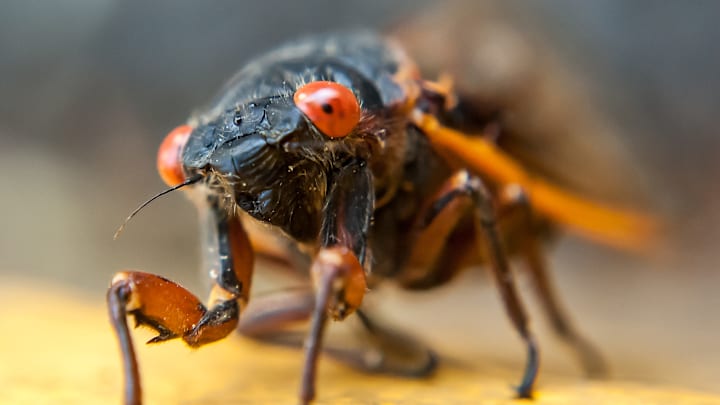With spring comes blossoming flowers, chirping birds, and loud cicadas. According to USA TODAY, swarms of 17-year periodical cicadas will emerge in the eastern half of the U.S. this season. If you’d like to know the historical range of these insects, this interactive map from the University of Connecticut has you covered.
People should expect to see Brood XIV, the second-largest periodical cicada brood, in parts of the South, Northeast, and Midwest. The map depicts areas of the insect’s verified presence (shown with cicada symbols) and verified absence (indicated by red hollowed circles). Just hover over either symbol to see the date, time, state, and county of the record. Georgia, Indiana, Massachusetts, New York, and Pennsylvania are some of the states where the bugs will show up this year, according to historical data.
The University of Connecticut notes that it doesn’t attempt to draw clear brood boundaries or generalize sightings by county. Determining cicada brood boundaries is complex work and usually results in overestimations. Therefore, this interactive map focuses on specific points where a project member did or did not witness cicadas in a given place and time. It’s also important to note that the map’s dates show where cicada choruses were active, not where they emerged. The bugs could have emerged weeks earlier than the times on the map.
Some symbols represent the cicada locations recorded by esteemed entomologist Charles Lester Marlatt, who established the Roman-numeral brood system while studying cicadas in the early 1900s, and Chris Simon, a senior research professor at the University of Connecticut, who closely studied the bugs’ movements across America.
Cicadas typically start to come out in late April or May in hotter areas and in May or early June in cooler places. They usually hang around for about four to six weeks, and the peak of noise levels will last about two weeks. People should brace themselves if cicadas are expected to appear in their area, as the bugs can be louder than traffic.
Read More About Insects:
